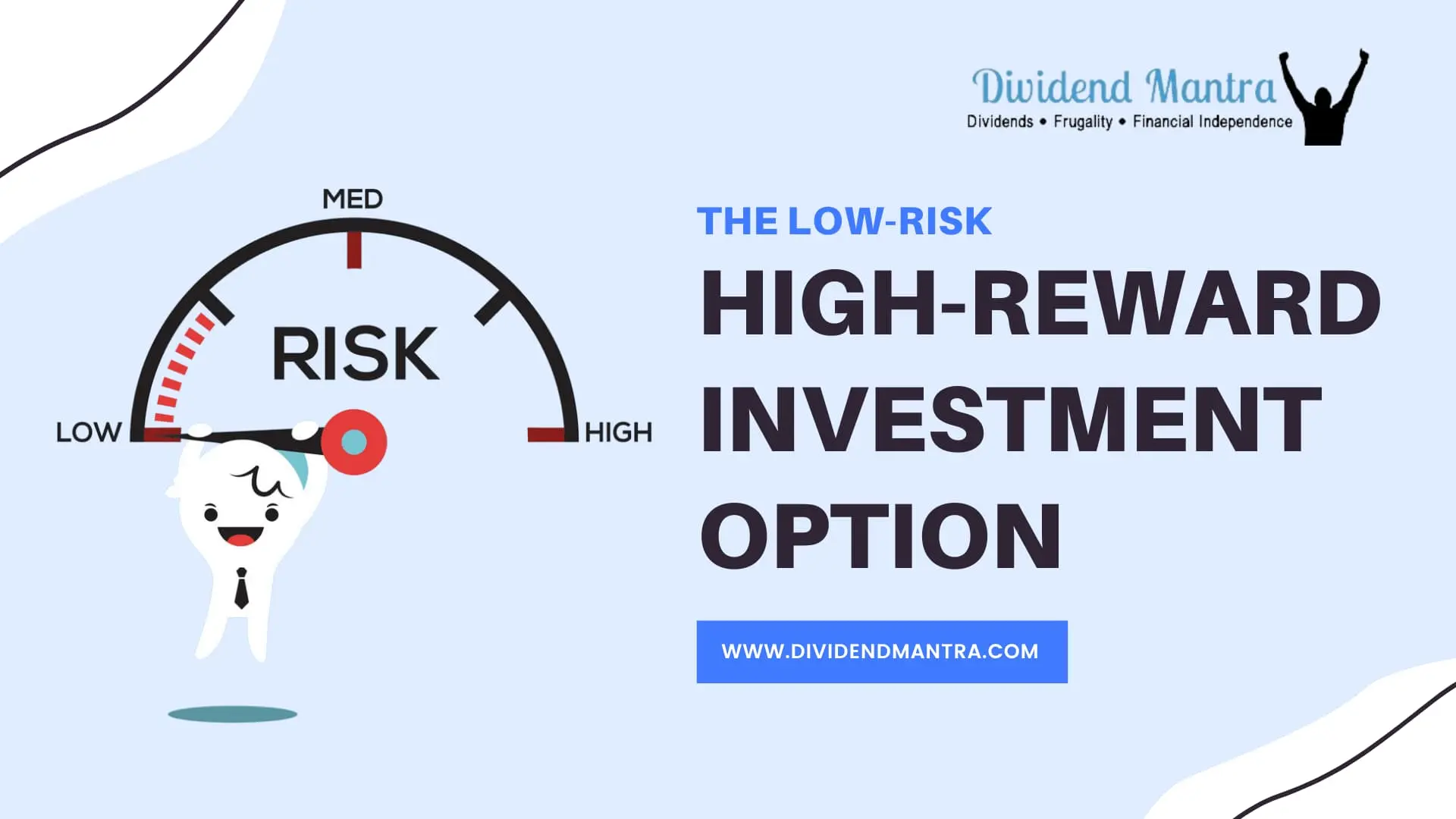How Much Money Do You Need To Live off Dividends?
In today’s economy, it’s important to have multiple sources of income. One way to create a passive income stream is to invest in dividend-paying stocks. But how much money do you need to live off dividends? And what are the risks associated with this type of investment? In this article, we’ll answer these questions and more.
Living off Dividends: Is It Possible?
There is a lot of discussion about how to live off dividends these days. Some people think it’s possible, while others are not so sure. The biggest challenge for those looking to live off dividends is finding high-quality stocks that will provide a steady stream of income.
It’s important to remember that not all dividend stocks are created equal. You need to find companies with a track record of increasing their dividends and that have a strong financial position. If you’re not confident in your ability to pick individual stocks, there are also several mutual funds and exchange-traded funds that focus on dividend-paying companies.
The key is to make sure you have a diversified portfolio that includes both growth and value stocks, as well as international companies. This will help reduce your risk and provide stability over the long term.
Also, do not forget that if you want to live off dividends, you’ll need to save up a lot of money. How much you will need depends on your spending habits, but a general rule of thumb is to have at least six months of living expenses saved. Investing this can help you get started, and put you on the path to getting a good income off your dividend stocks.
Reasons To Consider Living off Dividends
There are many reasons to consider living off dividends. Some of these include:
a. Control over your life: One reason to consider living off dividends is that it would give one a greater sense of control over their life. Research shows that those who are reliant on a paycheck are less happy than those who have more control over their lives. Given this, one way to increase control over one’s life is to live off of dividends rather than a regular paycheck.
b. The need for a stable income: The need for a stable income is another reason to consider living off dividends. The stability of regular dividend payments can help reduce financial uncertainty and provide peace of mind during difficult times. In addition, a dividend-based income stream may be less volatile than other sources of income, such as investment returns or employment income. This could help protect you even during market downturns.
c. Tax advantages: When you live off dividends rather than salary, you can take advantage of a lower tax rate on that income. Additionally, you can often save on Social Security and Medicare taxes. This can add up to a significant savings over the course of a year. A good reason why it is a good idea to consider this approach is that it can help you maintain your lifestyle in retirement.
d. Creation of a passive income stream: The ability to create a passive income stream is a reason to consider living off dividends. Passive income can be earned through rental properties, royalties, or by creating a product or service that can be sold once and then generates income without additional effort on your part. Dividends are a form of passive income that is generated by owning shares of stock in a company. When the company earns profits, it pays a portion of those profits to its shareholders in the form of dividends.
e. Backup source of income: For many, regular and healthy dividend payments means no longer working and relying solely on savings and Social Security to cover expenses. That’s why dividend income can be so important. It can help supplement your other income sources and make your life more comfortable.
Types of Dividends
There are three main types of dividends: cash, property, and stock.
Cash dividends are paid in money and are the most common type. The amount paid depends on how much profit the company has made and whether it is paying out a fixed percentage of profits or a fixed amount per share.
Property dividends are payments in kind, such as goods or services. They are not as common as cash dividends but can be useful for companies that want to reward their shareholders with something other than money.
Stock dividends involve giving shareholders extra shares in the company rather than paying them cash. This is often used by companies that want to avoid having to pay out too much money in dividends.
What Dividend Payment Type Is Recommended if You Want To Live off Dividends?
If you’re looking to live off of your dividends, it’s generally recommended that you receive your payments in the form of cash. There are several reasons for this recommendation.
First, if you’re receiving your dividends in cash, you’re not tying up your money in the stock and you can reinvest it into other opportunities. Additionally, if the company experiences hard times and has to reduce or suspend its dividend payments, you’ll still be able to live off of the income you’ve already received. Lastly, by receiving your dividends in cash, you have more control over your money and can make investment decisions that are best for your individual financial situation.
Calculating How Much You Need To Live off Dividends
As we mentioned, dividend stocks can be a great way to generate passive income, but how much do you need to live off dividends? This will depend on your expenses and the size of your dividend portfolio.
Assuming you have a diversified dividend portfolio with an average yield of 3%, you would need to have around $333,333 invested to generate about $1,000 per month in passive income. This assumes you reinvest all of your dividends that year without taking a cent out.
If your expenses are higher than $1,000 per month, you will need a larger dividend portfolio to cover your costs if you decide to start cashing out your dividend yield and spending it. Conversely, if your expenses are lower than $1,000 per month, such as you can do when living in the countryside or in a cheaper country, you can get away with a smaller dividend portfolio.
All in all, however, it’s important to remember that these numbers are just estimates and will vary depending on individual circumstances.
Factors To Consider When Calculating How Much Money You Need To Live off Dividends
When calculating how much money you need to live off dividends, there are a number of factors to consider.
First, you’ll need to estimate your living expenses. This includes everything from rent or mortgage payments to groceries and utilities. You’ll want to make sure you have enough cash flow to cover your living expenses, including taxes and inflation.
Next, you’ll need to determine your dividend income. This can be done by looking at the most recent dividend payouts for the companies in your portfolio. The amount of dividend income you receive will depend on the size of your portfolio, the yield of the stocks in your portfolio, and how often you receive payments.
Finally, you’ll need to subtract your living expenses from your dividend income. This will give you an estimate of how much money you can live off of dividends alone.
How To Live off Dividends Without Reducing Your Standard of Living
Living off dividends without reducing your standard of living is possible, but it takes some planning. These steps are listed below:
a. Calculate the Yield
Calculating the yield is important to ensure you can live off dividends without reducing your standard of living. To calculate the yield on a dividend stock, divide the annual dividend payments by the share price. The higher the yield, the better the investment. For example, if a stock pays $2 in dividends annually and is priced at $20 per share, the yield is 10 percent.
However, it is important to note that a high yield doesn’t always mean a good investment. A company that is struggling financially may be forced to cut its dividend payments, which would reduce the stock’s value.
b. Choose the Right Dividend Stocks
When you are looking for dividend stocks, it is important to choose the right ones. This will allow you to live off of dividends without reducing your standard of living. One way to do this is by looking for stocks with a high yield. This means that the stock pays out a high percentage of its earnings as dividends.
Another thing to look for is a company that has a long history of paying dividends. This will ensure that the company is likely to continue paying dividends in the future. You should also look at the company’s financial stability to make sure that it is able to pay its shareholders’ dividends.
Finally, you should make sure that the stock is trading at a reasonable price. This will help ensure that you don’t lose money if the stock price falls. By following these tips, you can find safe and profitable dividend stocks to invest in.
c. Set Up Your Own Diversified Dividend Portfolio
You should set up your own diversified dividend portfolio to ensure a steady stream of income. There are a few things you need to do, in order to get started.
The first step is to decide how much money you want to put into the portfolio. You don’t want to invest too much, if you’re not comfortable with the risks involved. However, you also don’t want to invest too little, and miss out on potential profits. A good rule of thumb is to invest somewhere between 40-60% of your net worth.
Once you’ve decided how much money to invest, you need to start looking for stocks that pay high dividends. There are a number of different articles on our website that can help you with this process.
d. Keep Your Eye on Interest Rates and Stock Market Volatility
Interest rates and stock market volatility are important factors to consider when deciding on living off dividends without reducing your standard of living. If you are invested in a portfolio that pays a consistent dividend, it’s important to keep an eye on the interest rates and stock market volatility to ensure your income stream is not disrupted.
If interest rates rise, the value of your dividend stocks may decrease. This is because the underlying company may have to pay more interest on its debt, which will reduce its earnings and, ultimately, its dividends. In times of high stock market volatility, some investors may sell their dividend stocks out of fear, which could also lead to a decline in the stock’s price.
It’s however, important to remember that while interest rates and stock market volatility can impact the value of your dividend stocks, they do not always have a negative effect.
e. Move to a Place Where You Get To Spend Less Money
It’s no secret that the cost of living continues to rise, while wages remain stagnant. In order to maintain your current lifestyle, it’s important to find ways to reduce your expenses. One option is to move to a place where the cost of living is lower. This could mean relocating to a smaller city or town, or even moving out of the country altogether.
Another option is to find ways to reduce your spending. There are many ways to do this, such as cooking at home instead of eating out, canceling unused subscriptions, and downsizing your living space.
While the second option is not necessary if you live in a place where things are cheap, ideally, many people do both. By living in a low-cost area, you can stretch your nest egg farther and make your dividend payment dollars go even further.
Types of Stocks To Buy for a Reliable Income Stream
The market is always changing, and with it the types of stocks that are most reliable for income generation. But, here are three today that should give you a reliable stream of income:
1. Dividend Aristocrats: These are stocks of companies that have increased their dividends for 25 consecutive years or more. They tend to be more stable and predictable than other stocks and can provide a reliable income stream in any market conditions.
2. REITs: Real estate investment trusts (REITs) own and operate real estate properties, such as malls, offices, and apartments. They offer a high yield because they are required by law to distribute at least 90% of their taxable income to shareholders every year.
3. MLPs: A Master Limited Partnership (MLP) is a business structure that combines the tax benefits of a partnership with the liquidity of a publicly traded company. MLPs are pass-through entities, meaning that they do not pay federal income taxes. Instead, the income and losses from the partnership are “passed through” to the individual partners, who report them on their personal tax returns. MLPs are often used in the energy industry because of the tax benefits associated with investing in natural resources. The MLP market also tends to be less volatile than the stock market, because supply and demand are more in balance.
Frequently Asked Questions (FAQs)
1. What Amount of Dividends Are Needed for a Reliable Income?
When retirees are looking for a reliable income, they often look to dividends. But what is the right amount of dividends to receive each month in order to have a stable income? According to research from Merrill Lynch, “you’ll need at least $1,500 per month in dividend income to feel comfortable in retirement.” This number may vary depending on your specific needs and lifestyle.
However, if you’re looking to supplement your Social Security or pension income, then you may not need as much in dividend payments. Additionally, if you have other sources of income – such as rental property or annuities – then your monthly dividend requirement could be lower as well.
Ultimately, it’s important to remember that everyone’s situation is different and that you should tailor your investments and income goals accordingly.
2. What Frequency of Dividends Payout Should You Choose? Dividends Can Be Paid Monthly, Quarterly, Semi-Annually, or Annually.
When it comes to dividends, one of the most important decisions you’ll make is how often you’ll receive them. Dividends can be paid monthly, quarterly, semi-annually, or annually. So, which payout frequency is right for you?
It depends on a few factors. For starters, how often do you need that money? If you’re retired and rely on those dividends for income, then it might be better to have them paid out more frequently. Quarterly or even monthly payments would be ideal in that case.
But if you’re not totally relying on the dividends for income and can afford to wait until the end of the year, then annual payments might be best. That way, you’ll get a larger sum of money all at once and won’t have to worry about budgeting it out over time.
3. Why Should Investors Consider Taxation of Dividends Before Investing?
When looking for potential investments, it is important for investors to consider a company’s dividend policy. Dividends are taxed at either a preferential tax rate or at your ordinary income tax rate, so it is important to understand the tax implications before investing.
For example, if you are in the 25% tax bracket, you would be better off investing in a company that pays dividends at a preferential tax rate rather than one that pays dividends at your ordinary income rate.
Some companies offer a choice of whether you want your dividends taxed as regular income or reinvested in more shares of the company. If you choose to have them reinvested, they will be taxed when you sell the shares. Whatever you do, it is important to weigh the pros and cons of each option before making a decision.
4. How Much Income Can You Expect From Dividend-Paying Stocks?
Dividend stocks offer a steady income stream for investors. But how much can you expect to earn?
It depends on the stock and the company’s dividend policy. Typically, a company will pay out between 30 and 50 percent of its profits in dividends. So, if a company earns $1 per share, it will likely pay out between 30 and 50 cents per share in dividends.
But that’s just an average. Some companies pay more, while others pay less. You can get a sense of how much a particular company pays by looking at its dividend yield. This is calculated by dividing the annual dividend by the stock price. For example, if a company pays out $1 per share in dividends and the stock price is $20, then the dividend yield is 5 percent (1/20).
5. What Is a Safe Amount of Money To Live off Dividends?
Dividends can provide all investors with a steady stream of income, but it’s important to make sure you’re not withdrawing too much from your portfolio. According to Bankrate, people should aim to live off no more than 4-5% of their nest egg each year. This will help ensure that your savings last for as long as you need them.
Overall, it depends on how much money you have saved, how much you need each month to cover your expenses, and the yield on your dividend investments. Generally speaking, however, given the research, it is safe to assume that you can live off of between 4 and 5 percent of your invested assets each year. This would allow you to withdraw around 4-5 percent of your portfolio value each year without running out of the invested capital.
If you’re relying solely on dividend payments, you’ll want to make sure the companies you invest in are stable and have a history of paying dividends. You can use sites like ours to research dividend-paying companies.
6. Are There Risks to Deciding to Live off Dividends?
There are risks to deciding to live off dividends, but they can be mitigated with proper planning. For one, if the company whose stock is being used to generate income falls on hard times, the dividend payments could stop. Additionally, if the stock price falls, so does the value of your dividend income.
Also, as with most types of investments, there’s always the possibility that inflation will outpace the dividend payments, leaving investors with less purchasing power over time. Finally, relying too heavily on dividends can lead to portfolio stagnation and missed opportunities for growth.
7. How Can You Get Started With Dividend Investing?
If you’re interested in getting started with dividend investing, there are a few things you need to do first. First, you need to open up a brokerage account and put some money in it. The next step is to find a good dividend-paying stock. You can do this by looking at the company’s financials and past performance.
Once you’ve found a good stock, you need to decide how much money you want to invest in it. Usually, for beginners, it is best to start small and increase your investment as your confidence grows. Make sure to keep an eye on the stock’s price and dividend payout ratio so you don’t overpay and get paid too little in dividends.
You may then decide to reinvest your dividends so that your money can grow even faster and enjoy the benefits of compounding returns!
Conclusion
In conclusion, the amount of money you’ll need to live off dividends will depend on your lifestyle and spending habits. If you’re comfortable living a modest lifestyle, you may only need around $1,000 per month in dividend income. However, if you want to live a more luxurious lifestyle, you’ll likely need closer to $3,000 or more in dividend income. In order to generate enough income to cover your living expenses, you’ll need to have a portfolio that pays out at least 3-4% in dividends.
So, do not forget to have a portfolio that pays out around 4% or more. You should also consider reinvesting your dividends to help your portfolio grow. With a little effort, you can create a stream of income that will cover your expenses and provide you with peace of mind.








